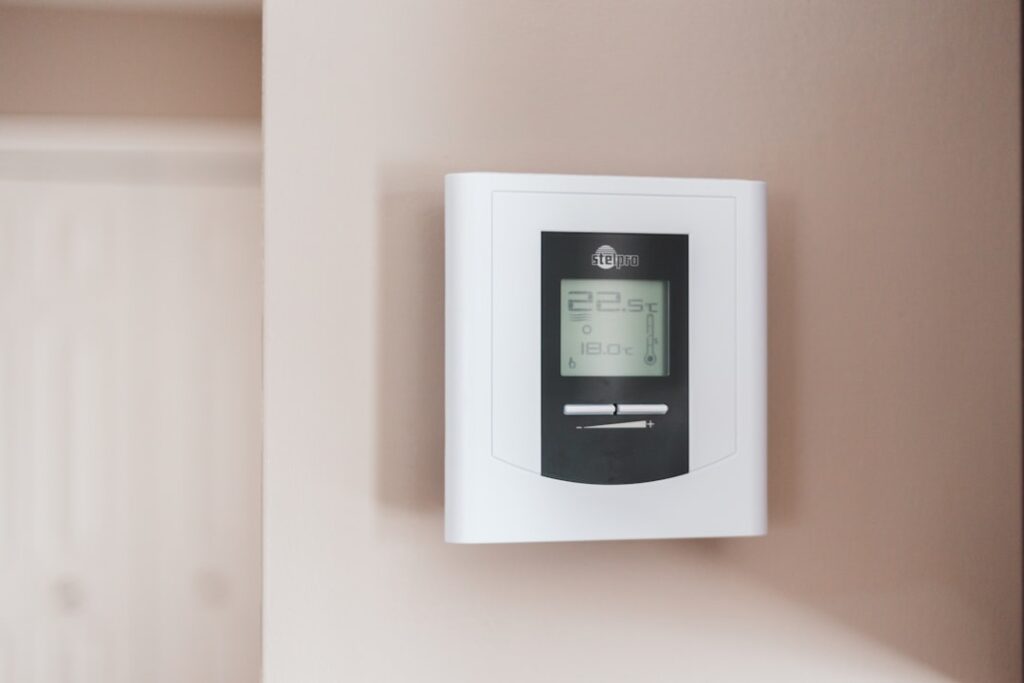Maximizing Efficiency with Energy-Efficient Smart Thermostats
In an age where technology is integrated into our daily lives, energy-efficient smart thermostats have emerged as essential components of smart home devices. These innovative tools not only facilitate the optimal management of home heating and cooling systems but also contribute significantly to energy conservation and cost savings. In this article, we will explore the advantages of energy-efficient smart thermostats, how they operate, and their impact on energy consumption.
Understanding Energy-Efficient Smart Thermostats
Energy-efficient smart thermostats are designed to optimize energy use by learning your heating and cooling preferences. They connect to your home’s Wi-Fi network and can be controlled remotely via smartphones or other devices. The technology used in these thermostats allows for adjustments based on real-time data, weather forecasts, and user behavior.
How Smart Thermostats Work
These devices incorporate several features that enhance their efficiency:
- Learning Algorithms: Many smart thermostats come equipped with algorithms that learn from your routines. Over time, these devices can adjust settings automatically, making it easier to maintain a comfortable environment while minimizing energy waste.
- Remote Access: With mobile applications, users can adjust their thermostat settings from anywhere, which prevents unnecessary heating or cooling when no one is home.
- Integration with Other Smart Devices: Energy-efficient smart thermostats often work in conjunction with other smart home devices, such as smart speakers, lighting systems, and security systems, to increase overall energy efficiency.
Benefits of Energy-Efficient Smart Thermostats
Investing in energy-efficient smart thermostats brings several advantages:
Cost Savings
One of the key benefits is the potential for substantial savings on energy bills. By managing your heating and cooling more efficiently, smart thermostats can reduce energy consumption by as much as 10-15% annually.
Environmental Impact
Reducing energy consumption directly correlates with a decrease in greenhouse gas emissions. By utilizing energy-efficient smart thermostats, homeowners can play a significant role in fighting climate change.
Choosing the Right Energy-Efficient Smart Thermostat
When selecting a smart thermostat, consider the following factors:
- Compatibility: Ensure the device is compatible with your existing heating and cooling systems.
- Features: Look for features that suit your lifestyle, such as geofencing, scheduling options, and integration with other home automation systems.
- Brand Reputation: Research brands with strong customer reviews and reliable customer support.
Installation and Maintenance
Energy-efficient smart thermostats are generally easy to install, and many brands offer step-by-step guides. However, homeowners who are not comfortable with DIY projects may consider hiring a professional for installation. Regular updates and maintenance will ensure your thermostat runs efficiently and continues to learn your preferences over time.
Conclusion
Energy-efficient smart thermostats are pivotal in the evolution of smart home devices, offering convenience, savings, and environmental benefits. By investing in these technological advancements, homeowners can enhance their living spaces while contributing positively to the planet. As the landscape of smart home technology continues to grow, energy-efficient smart thermostats remain a popular choice for those looking to improve their home’s efficiency.
“`html
Benefits of Energy-Efficient Smart Thermostats
One of the most significant advantages of incorporating energy-efficient smart thermostats into your home is the potential for substantial savings on energy bills. These devices intelligently learn your heating and cooling patterns, allowing them to adjust temperatures based on your specific lifestyle. Over time, they can help decrease energy consumption by optimizing heating and cooling cycles. This not only contributes to a reduced carbon footprint but also ensures your home remains comfortable without incurring needless expenses.
Convenience and Control
Energy-efficient smart thermostats provide unparalleled convenience for homeowners. Most models come equipped with smartphone applications, enabling you to control your home’s temperature from anywhere. Forget to adjust the thermostat before leaving for vacation? With a smart thermostat, you can make adjustments remotely, ensuring that your home isn’t using excess energy while you’re away. This level of control means you can maintain a comfortable atmosphere, prioritizing energy efficiency without sacrificing comfort.
Compatibility with Smart Home Ecosystems
Another appealing aspect of energy-efficient smart thermostats is their inherent compatibility with various smart home ecosystems. Many of these devices can easily connect with other smart appliances and systems, such as smart lighting and security, creating a cohesive and efficient home automation system. This integration allows for advanced features like geofencing, where your home can adjust temperatures based on your location, ensuring that energy-efficient measures align seamlessly with your everyday activities.
Enhanced Features for Optimal Performance
Modern energy-efficient smart thermostats often come with a set of enhanced features designed to further improve your home’s energy management. For instance, many models offer energy usage reports and insights, helping you understand your consumption patterns over time. Additionally, some smart thermostats can be programmed to adjust settings based on weather forecasts, promoting efficiency even before the temperature changes. These advanced functionalities not only lead to energy savings but also foster a greater awareness of your home’s overall energy ecosystem.
“`


